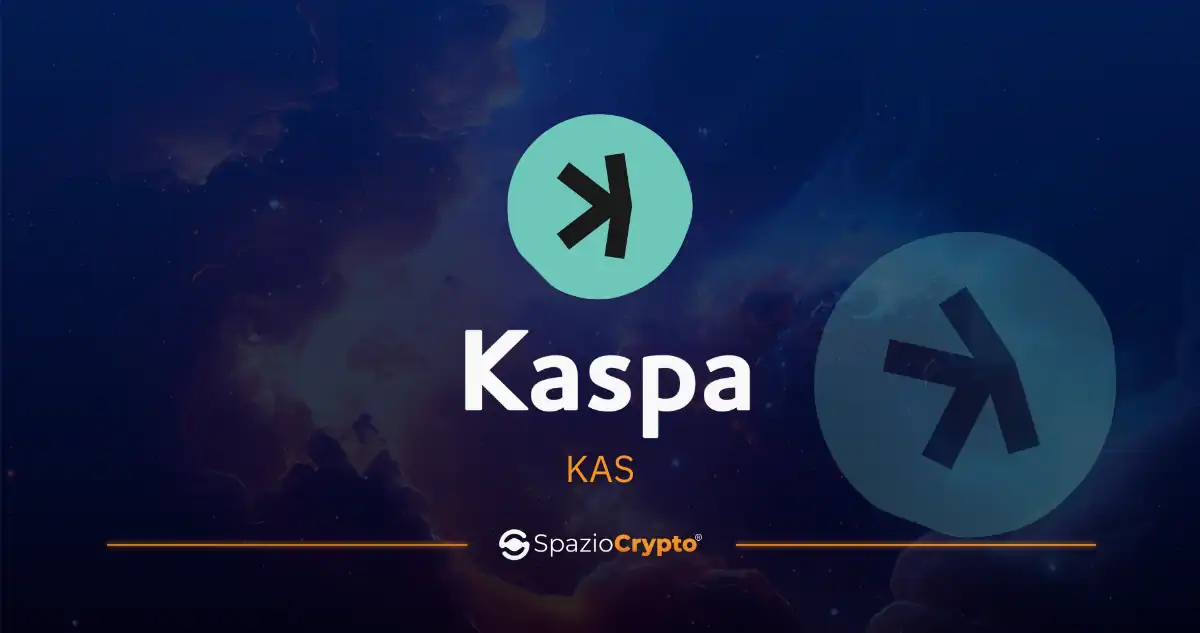
Kaspa: Complete Guide to KAS AND ITS BlockDAG
Discover Kaspa (KAS), the Proof-of-Work cryptocurrency based on BlockDAG. Fast transactions, decentralisation and improved security.

Discover Kaspa (KAS), the Proof-of-Work cryptocurrency based on BlockDAG. Fast transactions, decentralisation and improved security.

Get the latest news, learn from experts, discover new tools, and find inspiration right in your inbox.
No spam. Unsubscribe anytime.
A powerful documentary on how Bitcoin and blockchain are reshaping money, power, and geopolitics—from El Salvador’s Bitcoin experiment and Europe’s regulatory revolution to the rise of decentralized finance and the new global financial order.
Kaspa (KAS) is a decentralised, open-source, layer-1 cryptocurrency that follows a Proof-of-Work consensus mechanism based on the GHOSTDAG protocol. This protocol is a more scalable generalisation of the consensus outlined by Satoshi Nakamoto, which sequences all blocks in parallel, unlike traditional linear blockchains. You can see how GHOSTDAG works in the blockDAG live viewer.
Kaspa is a scalable, decentralised, top-level protocol with instant transaction validation. The creators of the project were inspired by Satoshi Nakamoto's developments, but sought to improve upon them.
Architecture and Short History of Kaspa
Kaspa's architecture is based on the Bitcoin protocol and Proof-of-Work consensus mechanism, but the processing speed of this blockchain is much higher due to improved block processing technology. Kaspa has become one of the few next-generation protocols that operate on Proof-of-Work, as developers increasingly prefer Proof-of-Stake.
The protocol has been developed for over 10 years, and the company DAGLabs, responsible for the Kaspa network, was founded in 2013. Kaspa's developments, in particular the Ghost protocol, were even mentioned in Ethereum's Whitepaper. The Kaspa coin was launched in November 2021.
Kaspa is the first blockDAG (non-blockchain) cryptocurrency. A blockchain is a linear system in which transactions are recorded in time-ordered and sealed blocks. The blockDAG is a directed acyclic graph (DAG) - a mathematical structure in which nodes represent blocks and arcs refer to child/parent blocks. This new implementation of the distributed ledger is the first of its kind, offering next-generation scalability, high transaction speed and instant confirmations while maintaining decentralisation.
How Does Kaspa Work?
The Kaspa protocol provides high blockchain performance while maintaining security through Proof-of-Work consensus. Kaspa is based on the PHANTOM protocol, which simplifies Bitcoin consensus and uses the BlockDAG (Block Directed Acyclic Graph) mechanism, which allows multiple blocks to be processed in parallel, providing a significant increase in network processing speed.
The Kaspa network generates one block every second. For comparison, on the Bitcoin blockchain, it takes an average of 10 minutes to extract a block.
Instead of the Nakamoto consensus mechanism, Kaspa uses the GhostDAG (Greedy Heaviest Observed Subtree Directed Acyclic Graph) protocol to verify the status of the blockchain and validate it. GhostDAG removes blocks deemed invalid or unreliable.
According to official documents from the project's developers, the Kaspa network is capable of processing up to 400 transactions per second - 57 times more than the Bitcoin protocol, which only processes up to 7 transactions per second. However, a review of the blockchain shows that, in real mode, the processing speed only varies from 1 to 1.6 TPS, but this could be due to the low activity of the network, as each block contains, on average, only 2 to 4 transactions.
Why Kaspa is Called "Digital Silver"
Kaspa (KAS) is often called "digital silver", emphasising its similarity to BTC ("digital gold"). Here are some common features:
But there is an important difference between the two coins: the halving of Kaspa happens every month and for a smaller percentage. Remember that Bitcoin's halving happens every four years and after that the reward for miners is halved.
Despite the similarities between Kaspa and Bitcoin, even the most optimistic supporters of the project admit that KAS is unlikely to catch up with the leading cryptocurrency in terms of market capitalisation. However, in the short term, the growth momentum of the 'digital silver' could outpace that of BTC.
Features of the Kaspa Cryptocurrency
The Kaspa project took the best of the Bitcoin and Ethereum blockchains and combined them into its own protocol (BTC + ETH = KAS). It has taken Nakamoto's original consensus from Bitcoin and uses it on the first layer, through the GhostDAG protocol, an improved version of the PHANTOM protocol developed by Jonathan Sompolinsky.
Kaspa's second layer is optimised for expected functionality and usability. It is designed to support Ethereum Virtual Machines (EVMs) and other virtual machines using cumulative constructs. This layer is separate from the basic consensus layer, making it as lightweight, decentralised and secure as possible. The second layer will be configured to provide smart contract support for decentralised financial applications.
Here are the main features of Kaspa:
The consensus layer of the project uses the PHANTOM protocol. This Proof-of-Work consensus protocol generalises the Nakamoto chain into a directed acyclic block graph (blockDAG).
What are the Perspectives for Kaspa?
Although the network was launched only 2 years ago, in terms of capitalisation, it is second only to the largest PoW blockchains, such as:
It is also important to consider the growth rate: in the past year alone, Kaspa's capitalisation has grown 31 times, from $78.77 million to $2.45 billion. For comparison, in the same period, the capitalisation of Bitcoin Cash has only increased 2.3 times, and that of Ethereum Classic by only 27.8%. With such a high growth rate, Kaspa has every chance of becoming a major blockchain PoW in the cryptocurrency industry.
However, this growth is partly due to the interest of miners. According to the coin generation programme, mining will cease in about three years, and it is not yet clear how this will affect the Kaspa network. In the long term, this could have a positive effect, as new KAS coins will stop being generated and the supply will remain limited, but in the medium term it could have a negative effect, as miners' rewards will decrease, reducing their motivation.
The protocol has not yet been tested, so it is unknown how stable the blockchain will be and how well the new BlockDAG/GhostDAG algorithms will work during a high network load. This could greatly influence the future of the Kaspa project.
On the other hand, Kaspa has good prospects, as it serves as an alternative to Bitcoin mining against the backdrop of the constantly increasing hash rate and network complexity. At the moment, KAS is the most profitable cryptocurrency to mine, which has been largely aided by the rapid growth of the coin's rate in recent months.
On which exchanges can you buy Kaspa
At the moment, Kaspa has been listed on more than 20 exchanges, but only a few of them are suitable for us:
Where to store kaspa
There are four versions of the wallet:
For a regular user, cryptocurrency should be stored at https://wallet.kaspanet.io/. Enter a new wallet in the appropriate field, then set your password. After that, you will be provided with a seed phrase, which you will have to write down in order not to lose access to the wallet.
Conclusion
The Kaspa cryptocurrency is one of the revolutionary blockchain projects that confirm the relevance of Proof-of-Work, but with some improvements. Thanks to these, blocks in the network are generated in parallel, allowing a better balance between scalability, speed and reliability. Kaspa is compared to Bitcoin due to their similarities: limited supply and no free distribution. However, KAS is a unique currency with great prospects.
Read Next
1Fuel (OFT): The New Crypto for All-in-One Wallets
1Fuel launches an all-in-one Web3 wallet with focus on security, privacy and accessibility. Discover tokenomics, roadmap and price forecasts.
Bonk (BONK): Solana's Meme Coin with a Purpose
Bonk is Solana's meme coin created for the community, with real uses in DeFi, NFT, gaming and payments, without VC and with transparent tokenomics.
FLOKI Coin: From Meme Coin To Metaverse
FLOKI evolves from meme coin to real ecosystem with DeFi, NFT, gaming and training in Web3.
SUI: Innovative Blockchain And $9 Billion Cryptocurrency
Find out what SUI is, how its blockchain works and what the growth prospects are for the cryptocurrency that has surpassed $9 billion capitalisation.